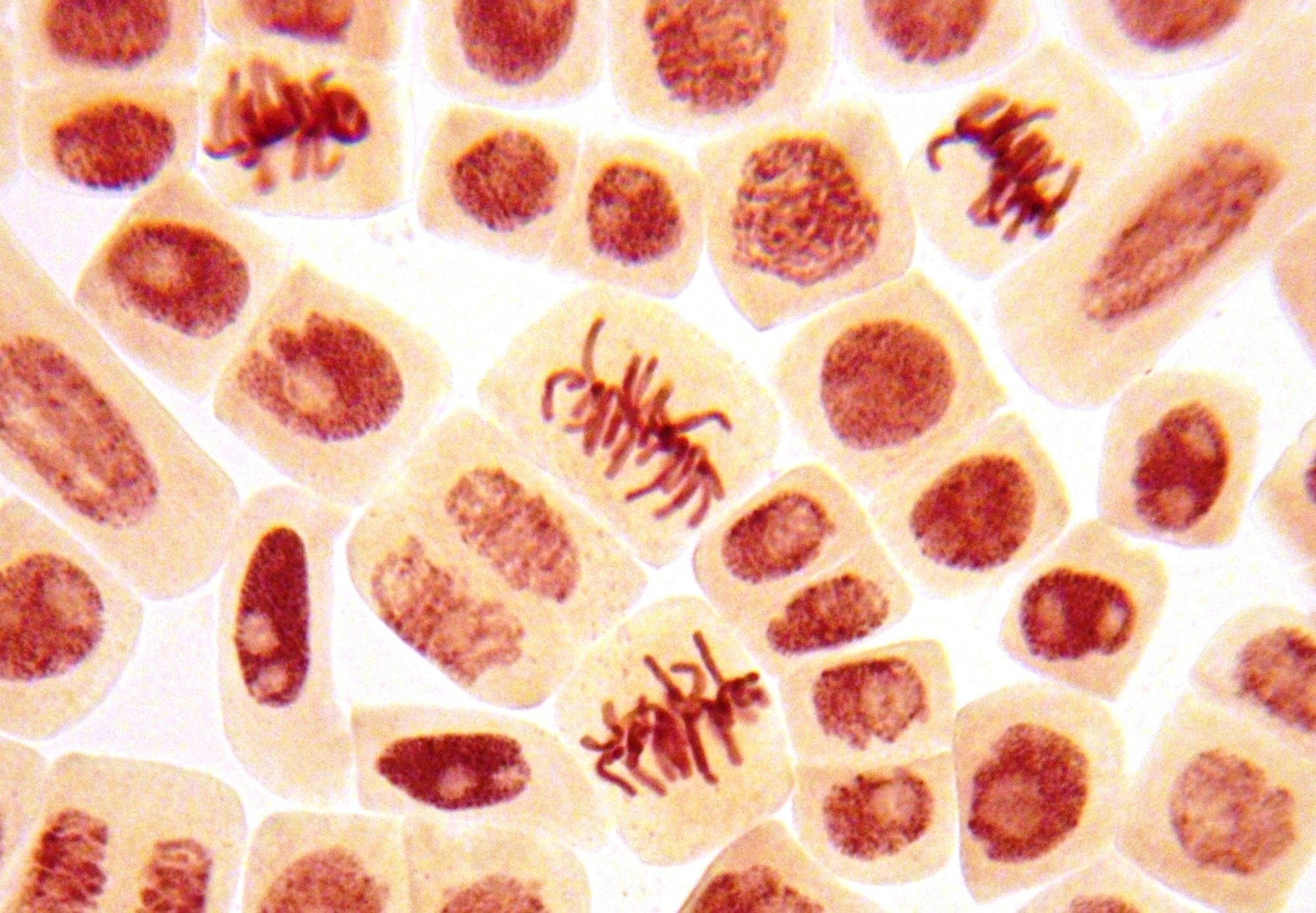In a recent study published in Nature, researchers identified the genetic determinants of micronuclei formation (MN).
 Study: Genetic determinants of micronucleus formation in vivo. Image Credit: Dimarion/Shutterstock.com
Study: Genetic determinants of micronucleus formation in vivo. Image Credit: Dimarion/Shutterstock.com
Background
Genomic instability and extracellular MN accumulation are hallmarks of various disorders, including inflammation-related diseases, cancer, and aging. MN are fragments of chromosomes formed due to errors in mitotic segregation or unrepaired DNA breaks.
MN are protected by an atypical nuclear envelope and can persist for several cellular generations, acquire aberrant epigenetic marks, and replicate their DNA.
Further, the nuclear envelope of MN can rupture, resulting in the accumulation of MN DNA damage, chromosomal recombination, and a potent pro-inflammatory response that could lead to cellular senescence.
The study and findings
The present study investigated the factors regulating MN formation in vivo. They screened over 6,000 mice across 997 loss-of-function mutant lines using a detection method that enumerated MN in erythrocytes.
This defined genes upon which disruption decreased (-MN) or increased (+MN) the formation and accumulation of MN relative to wild-type (WT) controls. Hits were grouped into three tiers (1 – 3) based on statistical significance.
Tier 1 contained 27 -MN and 29 +MN genes at p < 0.001, tier 2 included 26 -MN and 23 +MN genes at p < 0.005, and tier 3 comprised 21-MN and 19 +MN genes at p < 0.01.
Next, the team selected seven -MN genes (ABCB6, DUSP7, JMJD1C, HMX3, KLK9, PIAS2, and TATDN3) from tier 1 and disrupted them using clustered regularly interspersed short palindromic repeats (CRISPR)–CRISPR-associated protein 9 (Cas9) editing in human CHP-212 cells.
Cells were subjected to a low, chronic hydroxyurea dose that increased the average basal rate of MN from 1.5% to 5% in WT cells.
MN frequency in DNA topoisomerase III alpha (TOP3A)-knockout (KO) and DNA replication and sister chromatid cohesion 1 (DSCC1)-KO positive controls was 26.04% and 9.6%, respectively.
Decreased micronucleation was expectedly observed after disrupting protein inhibitor of activated stat 2 (PIAS2) (2.91%), dual specificity phosphatase 7 (DUSP7) (2.19%), and TatD DNase domain containing 3 (TATDN3) (1.31%).
Further, phenotyping analyses of all mouse mutant lines revealed a role for screened hits in maintaining homeostasis, with several lines exhibiting phenotypes associated with higher mortality and metabolic, neuronal, skeletal, and immune dysfunction.
In addition, the researchers integrated these findings with the loss-of-Y (LOY) genome-wide association study (GWAS) to assess the human relevance of MN screen hits.
LOY loci were enriched for human orthologs of MN genes. Besides, MN-linked genes were established as disease-associated or contributors to tumorigenesis.
Among the +MN group, a class of genes comprised factors involved in sister chromatid cohesion and defects in human orthologs of these genes result in multiorgan syndromes known as cohesinopathies.
The team investigated the role of DSCC1 (one of the genes from this class) in human disease by analyzing data from the United Kingdom (UK) Biobank.
They observed common genetic variants associated with bone mineral density (BMD) and body mass index that seemingly conferred their effects through altered DSCC1 expression.
Further, rare protein-truncating DSCC1 variants also showed suggestive associations with BMD (independent of common variants). The researchers characterized the Dscc1-mutant mice because this mutant had the most significant MN increase.
Dscc1-mutant (Dscc1-/-) mice were sub-viable at embryonic day 14.5 (E14.5). Surviving mutants had higher body weight, skeletal abnormalities, higher bone mineral content, and testicular atrophy.
Cultures of Dscc1-/- mouse embryonic fibroblasts (MEFs) isolated from E13.5 embryos showed slower growth and higher genomic instability than those from WT littermates (Dscc1+/+).
Extensive chromosome breakage and re-arrangement events were also observed in Dscc1-/- MEFs. Dscc1-mutants exhibited significantly reduced tumor latency, suggesting that DSCC1 can act as a tumor suppressor.
DSCC1 disruption through knockdown (KD) in human induced pluripotent stem (iPS) cells caused destabilization of the two other components of the alternative replication factor C complex (RFCCTF18). They increased the abundance of DNA damage response proteins.
Further, a genome-wide CRISPR-Cas9 screen was performed for genes that affect the proliferation of DSCC1-deficient human iPS cells.
This revealed four genes (phenotype suppressors), which could (when disrupted) partially rescue the proliferation defect, and five genes (phenotype enhancers), which (when disrupted) further reduced their fitness/proliferation.
The team focused on the relationship between DSCC1 and sirtuin 1 (SIRT1), one of the phenotype suppressors. They observed that SIRT1 KO in HEK293 cells partially rescued the cell viability defects caused by DSCC1 depletion.
Treating DSCC1-mutant iPS cells with selisistat, a selective SIRT1 inhibitor, partially rescued cellular proliferation and reduced MN formation.
Conclusions
Taken together, the researchers identified over 100 genes related to MN formation. These included Dscc1-/-, a semi-viable mutant with neurologic, developmental, structural, reproductive, and skeletal anomalies and tumor predisposition.
Disruption of DSCC1 caused a loss of cellular viability that was partially rescued by inhibiting SIRT1.
These data are collectively a resource of genetic determinants of genomic instability and provide a platform to identify functional/genetic modifiers relevant to human disease.